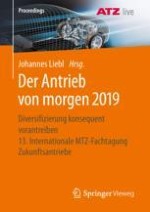2019 | Buch
Über dieses Buch
Einer der inhaltlichen Schwerpunkte des Tagungsbands zur ATZlive-Veranstaltung "Der Antrieb von morgen 2019" wird die Information zum aktuellen Stand der Antriebsentwicklungen sein. Die Tagung ist eine unverzichtbare Plattform für den Wissens- und Gedankenaustausch von Motoren- und Fahrzeugherstellern, deren Zulieferer und Entwicklungspartner, Lehrende und Ingenieure von Universitäten und Hochschulen, Vertreter von Behörden und Verbänden sowie für Techniker, die in diesem Themengebiet aktiv sind.
Anzeige
